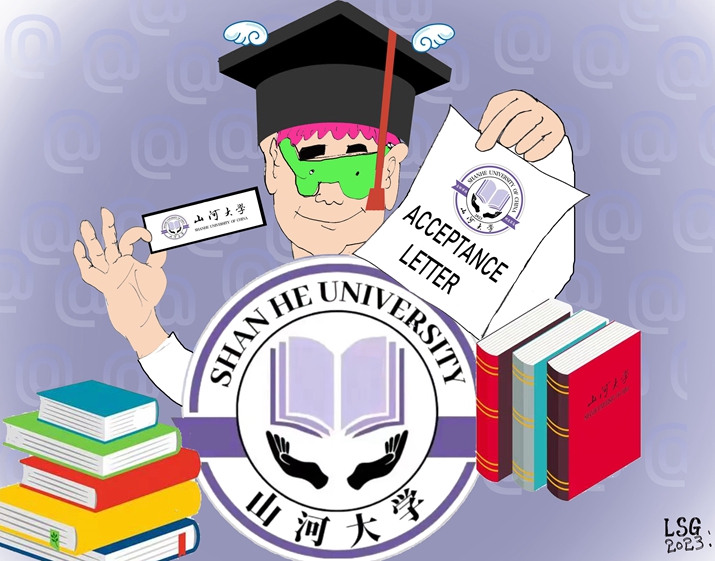
In early June, nearly 13 million high school seniors across the country sat for the gaokao, China's standardized national college entrance exam upon which college admission largely depends. This year's exam season saw one university, named Shanhe University, catapulted to fame. A dozen sports venues, five libraries and a 100-percent graduate employment rate—everything about this university is perfect, except that it doesn't exist in real life.
The name, Shanhe, is short for four provinces, Shandong, Shanxi, Henan and Hebei. The idea originated from an online comment, which called on all examinees in these four provinces to each donate 100 yuan ($13.8) toward building a university that will only admit local students. What was meant as a joke immediately went viral and, with the help of many creative netizens, eventually became a virtual institution that now has its own motto, logo and website.
Fictitious and idealized as it is, Shanhe University nevertheless reflects a widespread feeling of anxiety among Chinese students. Data have shown that more than a quarter of the country's candidates for this year's college entrance exam are from the abovementioned four provinces, but there are few top universities there. Hopefully, the university and what it stands for—more equal access to college education—will one day enter into reality.
(Rednet.cn, June 30)
